Container Gardening for Vegetables, Herbs and Fruit Trees
Container
gardening is
for those with poor soil or those who are gardening in small
spaces. By
selecting the right plants gardening in small spaces can result in a
highly productive area where you can grow vegetables, herbs and fruit
trees supplying your household with food from a modest courtyard, patio
or balcony.
Some Container Gardening Ideas and Tips
Container gardening
takes a little bit of planning and also looking at
how to maximize the space that you have to use. This includes
looking at how to grow plants both vertically and
horizontally, and
also looking at how to increase your space by growing plants from
above, suspended in pots and hanging baskets.
When container gardening, your aim should be only to grow plants that will give you high yields while taking up the least space. Therefore, growing strawberries in hanging baskets rather than in a strawberry barrel, or even herbs like thyme and parsley are perfect solutions for small spaces.
The trick to successful container gardening is to provide a rich, organic soil that will support such intensive gardening. It should contain well-rotted farmyard manure, homemade compost made from your kitchen scraps, especially banana peels and crushed eggshells from uncooked eggs, as well as blood and bone.
I like to collect all my vegetable and fruit scraps from my kitchen. The banana skins are particularly good as a source for potassium. By collecting your kitchen waste you are helping save the environment and recycling your waste to grow more lovely vegetables and herbs.
When growing vegetables in containers, as well as fruit trees and herbs, if you have these on your balcony you will need to take some factors into consideration. Firstly, make sure that the balcony can take the extra weight of the soil and water. Secondly, does it have good drainage, especially when it rains? Thirdly, do you need to have a hosepipe to your balcony to prevent carrying water through the house to your plants?
When container gardening, your aim should be only to grow plants that will give you high yields while taking up the least space. Therefore, growing strawberries in hanging baskets rather than in a strawberry barrel, or even herbs like thyme and parsley are perfect solutions for small spaces.
The trick to successful container gardening is to provide a rich, organic soil that will support such intensive gardening. It should contain well-rotted farmyard manure, homemade compost made from your kitchen scraps, especially banana peels and crushed eggshells from uncooked eggs, as well as blood and bone.
I like to collect all my vegetable and fruit scraps from my kitchen. The banana skins are particularly good as a source for potassium. By collecting your kitchen waste you are helping save the environment and recycling your waste to grow more lovely vegetables and herbs.
When growing vegetables in containers, as well as fruit trees and herbs, if you have these on your balcony you will need to take some factors into consideration. Firstly, make sure that the balcony can take the extra weight of the soil and water. Secondly, does it have good drainage, especially when it rains? Thirdly, do you need to have a hosepipe to your balcony to prevent carrying water through the house to your plants?
What Containers to use when Container Gardening?
When container gardening
you will have to think of the type
of
containers you will want to use. Terracotta, while it
looks good, is
very porous and doesn't retain the moisture very well. As a result,
plants planted in terracotta containers dry out more quickly than those
plant planted in wooden or plastic containers.
Don't plant your vegetables or fruit trees in pots that are the wrong size. Remember your fruit trees will grow, as will their roots, so choose large pots for these plants. Even tomatoes should be planted in 30 cm pots to allow good growth. Herbs, on the other hand, have a much more shallow root system, except for horseradish, and so more shallow containers can be used.
Don't plant your vegetables or fruit trees in pots that are the wrong size. Remember your fruit trees will grow, as will their roots, so choose large pots for these plants. Even tomatoes should be planted in 30 cm pots to allow good growth. Herbs, on the other hand, have a much more shallow root system, except for horseradish, and so more shallow containers can be used.
What Vegetables should you Plant when Container Gardening?
Vegetables can be grown
anywhere when container gardening, as long as the area gets 5-6 hours
of direct sunlight a day. Herbs, on the other hand, can do with less
sunshine and some even perform better when grown in some shade, or
indoors. Fruit trees too can grow with less direct sunlight
than
vegetables.
Runner beans and climbing cucumbers can be trained to climb up external staircases or grow vertically up trellises. Grapevines are perfect to cover that pergola. Fruit trees can also be grown against walls and espaliered out.
Tomatoes, cherry tomatoes, capsicums, eggplants, chillies and cucumbers can all be grown successfully in containers. If you have the space, there is nothing nicer than some new potatoes that you can harvest after growing them in a bucket. Silver beet, beetroot, leeks, spring onions take up very little space, as does celery.
Planting the loose variety of lettuce is a better option than the tighter heads of iceberg lettuce. This is because these varieties allow you to pick the leaves when you need them, therefore extending the harvesting period.
Zucchinis are prolific fruit bearers and you only need 2 strong plants to produce several kilos of fruit from each plant, and therefore one of those must have plants for container gardening.
See: Growing Vegetables in Containers for more Details
Runner beans and climbing cucumbers can be trained to climb up external staircases or grow vertically up trellises. Grapevines are perfect to cover that pergola. Fruit trees can also be grown against walls and espaliered out.
Tomatoes, cherry tomatoes, capsicums, eggplants, chillies and cucumbers can all be grown successfully in containers. If you have the space, there is nothing nicer than some new potatoes that you can harvest after growing them in a bucket. Silver beet, beetroot, leeks, spring onions take up very little space, as does celery.
Planting the loose variety of lettuce is a better option than the tighter heads of iceberg lettuce. This is because these varieties allow you to pick the leaves when you need them, therefore extending the harvesting period.
Zucchinis are prolific fruit bearers and you only need 2 strong plants to produce several kilos of fruit from each plant, and therefore one of those must have plants for container gardening.
See: Growing Vegetables in Containers for more Details
What Fruit Trees should you Plant when Container Gardening?
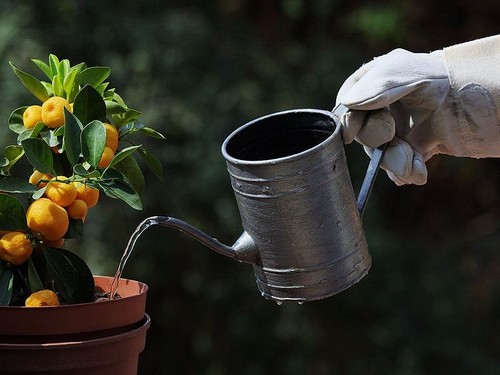
Watering your container gardens regularly is very important
Dwarf
fruit trees are ideal for container gardening. Dwarf fruit
trees or miniature fruit trees that have been created
especially for
container gardening and gardening in small spaces. Another
ingenious
idea has been the creation of the fruit
salad tree; a grafted fruit
tree of many different kinds of fruit growing off a single tree.
In fact these days you can get a variety of dwarf fruit trees of container gardening. You can buy lemons, limes, mandarins, and oranges. You can also buy apples, figs, mulberries, peaches, nectarines, cherries, guavas, mangoes and more. If you were to plant then in the ground they would grow to a maximum height of about 10 feet, but of course when you grow fruit trees in containers they will be kept much smaller than that. However, although they may be small in size, the fruit that they will produce will be the same size as what you have been used to.
Fruit trees should be grown in big pots that are at least 50 cm across the top, but even bigger as the tree matures. The ideal size is more than an arm's length across and thigh-high. For the first 6 weeks after potting water twice a week reducing this to once a week in winter. In the spring the containers should be watered twice a week, and increasing this to three and four times a week in the summer. Always take into consideration your climate and the rain when watering your fruit trees. Don't over water. If the soil is moist hold off for another day or two before watering again.
Remember that your fruit trees will need fertilizing and for your citrus trees apply 1/3 the recommended citrus food in August, and a normal dose of 6-9 months of slow-release fertilizer in September. Apply another 1/3rd dose of citrus food later in February. For figs add a cup of garden lime to a pot of 60 cm, or 1/2 cup to a pot of 40 cm. Do this every 3-5 years. Lemon trees are ideal for growing in small spaces.
I suggest that you have a board under your fruit tree pots with some skateboard wheels or coasters so that you can move your pots around your balcony or patio so that you can maximize their exposure to the sun during the day.
In fact these days you can get a variety of dwarf fruit trees of container gardening. You can buy lemons, limes, mandarins, and oranges. You can also buy apples, figs, mulberries, peaches, nectarines, cherries, guavas, mangoes and more. If you were to plant then in the ground they would grow to a maximum height of about 10 feet, but of course when you grow fruit trees in containers they will be kept much smaller than that. However, although they may be small in size, the fruit that they will produce will be the same size as what you have been used to.
Fruit trees should be grown in big pots that are at least 50 cm across the top, but even bigger as the tree matures. The ideal size is more than an arm's length across and thigh-high. For the first 6 weeks after potting water twice a week reducing this to once a week in winter. In the spring the containers should be watered twice a week, and increasing this to three and four times a week in the summer. Always take into consideration your climate and the rain when watering your fruit trees. Don't over water. If the soil is moist hold off for another day or two before watering again.
Remember that your fruit trees will need fertilizing and for your citrus trees apply 1/3 the recommended citrus food in August, and a normal dose of 6-9 months of slow-release fertilizer in September. Apply another 1/3rd dose of citrus food later in February. For figs add a cup of garden lime to a pot of 60 cm, or 1/2 cup to a pot of 40 cm. Do this every 3-5 years. Lemon trees are ideal for growing in small spaces.
I suggest that you have a board under your fruit tree pots with some skateboard wheels or coasters so that you can move your pots around your balcony or patio so that you can maximize their exposure to the sun during the day.
What Herbs should you Plant when Container Gardening?
As mentioned earlier,
the plants you should be using are those that
will give you a high yield while taking up little space. Herbs are
ideal for this, especially those that grow straight up like spring
onions, chives, garlic or herbs that you would use
constantly like
basil, parsley and mint.
Thyme and marjoram are good in hanging baskets because of the way they fall, and mint is another herb that can be planted this way. Just remember though that mint likes a lot of water, and hanging baskets can dry out if they haven't been properly prepared.
To properly prepare a hanging basket line it with some coconut hair first, before putting in the soil and this will help retain the moisture to the basket. Sphagnum moss is another material that is successful in retaining the moisture and lining the baskets first.
Thyme and marjoram are good in hanging baskets because of the way they fall, and mint is another herb that can be planted this way. Just remember though that mint likes a lot of water, and hanging baskets can dry out if they haven't been properly prepared.
To properly prepare a hanging basket line it with some coconut hair first, before putting in the soil and this will help retain the moisture to the basket. Sphagnum moss is another material that is successful in retaining the moisture and lining the baskets first.
Conclusion to Container Gardening
So you see, you don't need to have acres of land to be self-sufficient in some way. Urban homesteading is becoming very popular, and growing your own food in small spaces can be equally rewarding.Did you find this page helpful?
Sharing is a way of saying, "Thanks!"
Follow Us and Keep Up to Date
More Resources:
Go from Container Gardening back to Country LivingGo to Grow Vegetables
Go to Growing Vegetables in Containers
Go to Terrace Gardening
Go to Planting by the Moon
Go to When to Plant Vegetables
You can Add your own Ideas on Container Gardening Here!
We have lots of pages
where you can
contribute to throughout this homesteading website. We love hearing
from our readers, and hope you will be one of those we hear from too.
Look around our homesteading website. If you have some comments, tips, or ideas on
Container Gardening of your own, please submit them. All
you need
to do
is type and submit. We will do the rest!
Leave a Comment
Do you have anything that you would like to add after reading this page? We would love to hear your thoughts. If you can add additional information to what has been written here you will be adding value to the website! No need to have any special skills - just type and submit. We will do the rest!


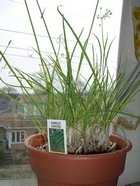
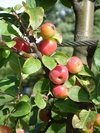
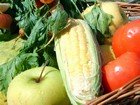
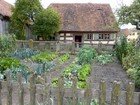
New! Comments
Do you have something of value to add? Leave me a comment in the box below.